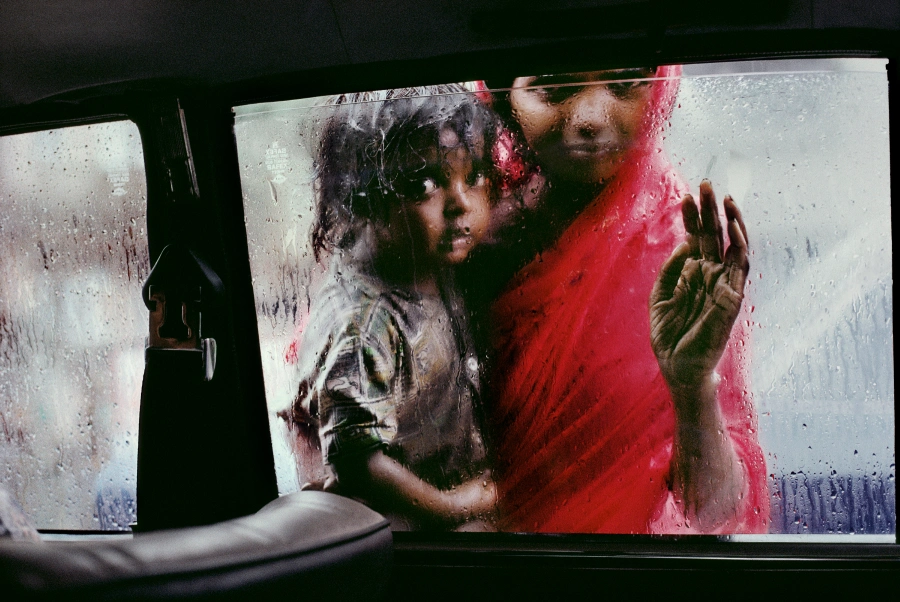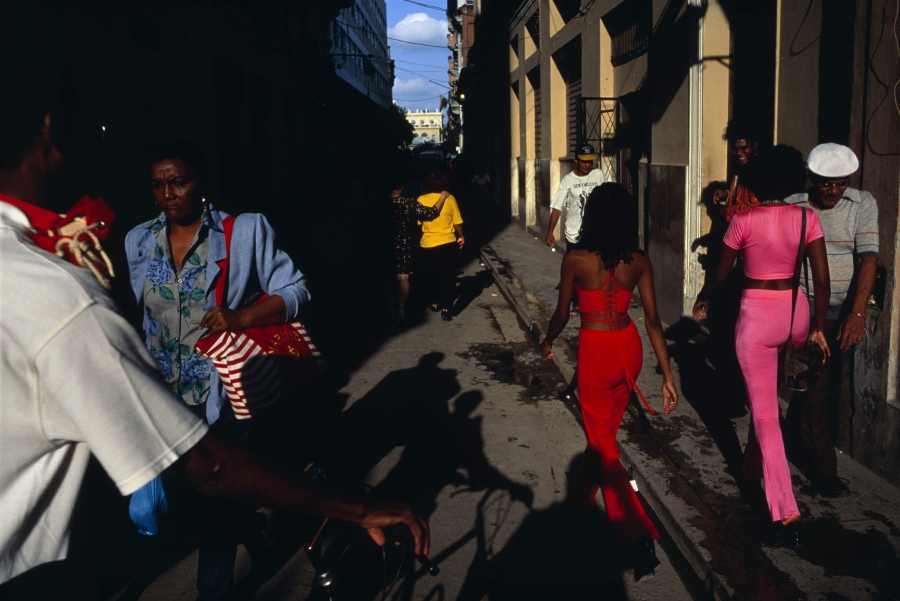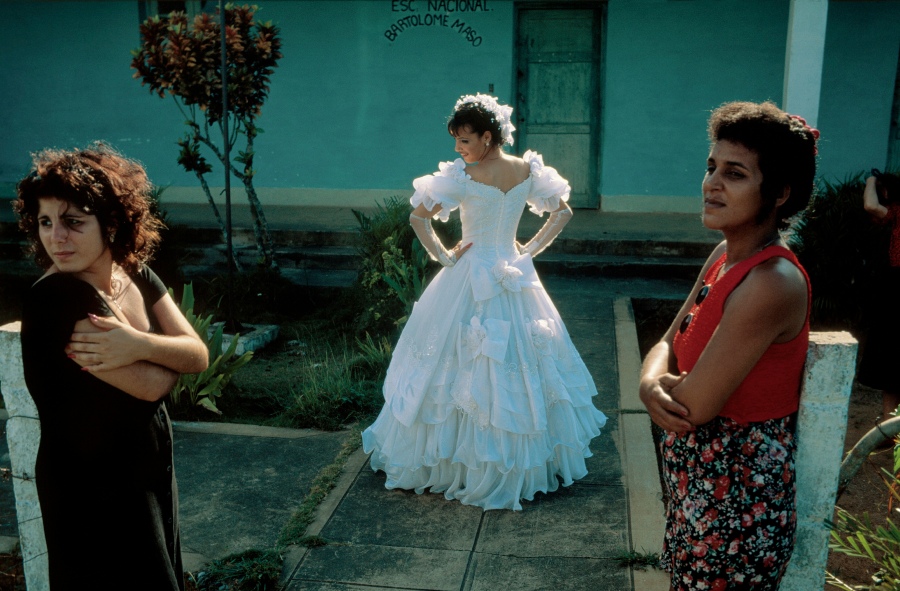In their experiments with color expression, many photographers started to rely very heavily on the semi-dark lightness range. A classical follow-up to this trend is setting the ubiquitous negative exposure compensation (typically within the limits of 1 EV) when shooting with slide film. Later, by manipulating contrast values at the stages of development, processing and printing you can still significantly alter the color values in favor of either more intense or more subdued tones. Despite all these adjustments, the resulting image (if shifted to medium or semi-dark lightness range) will often have “blacks” – significantly large areas of deep shadows with little to no detalization. Beginners are often confused by the loss of information in deep shadows (i.e., shadow clipping), and are unsure what to do about it.
In this chapter, we will try to learn more about shadow clipping as artistic practice and figure out how – if at all – we can use it to our advantage in photography. We will start, as usual, with discussing similar patterns in fine art. Let’s take a second look at one of the more realistic (“photographic”) paintings from the previous chapters, A Letter from the Front by Laktionov (Figure 6.6). This time around, I want to you notice the blackness of the woman’s skirt and of the girl’s hair – both details are so dark that we can hardly see any highlights, yet they take up significant space in the overall image. Thanks to these shadows, however, the entire painting looks three-dimensional and the light it depicts is almost tangible. There are, of course, some details still present in the black areas, but these would mostly be the texture irregularities – brush strokes, canvas pattern – that you can only really see by studying the painting close up.
Some readers will doubt the usefulness of clipping shadows and highlights in digital images: paintings are different from photographs, after all. Let me retaliate by discussing the pictures taken by the modern icons of color photography. Thus, I turn to the works of the Magnum Photos photographers, such as this image by Steve McCurry (Figure 9.1)

Figure 9.1. Steve McCurry
I dare assume that if we could see the details of the car interior they would have distracted us from the subject of the image. The photographer went so far in blacking out the shadows that parts of the children’s faces turned black, too. This blackness, however, provides a perfect contrastive background that helps bring out the boy’s expressive eyes and adds volume to the children’s figures. Shifting the tonal range to the darker areas allowed the raindrops to stand out more vividly against the texture of the foggy glass. It is interesting to note that the clipped shadows also frame the subject of the image, drawing even more attention to the powerful splash of red in the center. This example shows how clipping shadows can both bring out the color and hold the composition together. Deep shadows, if used correctly, can be a very productive and helpful compositional device. Look, for example, at this photograph of Alex Webb and note the areas of black and the vibrancy of colors in this picture (Figure 9.2).

Figure 9.2. Alex Webb
In her book on color, Betty Edwards writes: “The value levels of colors are important because dark and light contrasts are fundamental to good composition – that is, how the shapes and spaces, lights and darks, are arranged in a drawing or a painting. Problems with contrast almost inevitably result in compositional problems”. This would be a good time to yet again refer to the words of Harry Gruyaert that started this whole conversation: “…the object and its color are one and the same thing, which by the way is one of the principles of the theory of perception. Form and color are inseparable.”
The images that follow (Figures 9.3 to 9.5) all showcase how to use the logic of darkening or blacking out shadows to solve creative tasks. Two of them show people of different races; two are taken at a wedding. I am asking you to pay closer attention to those pictures, because many photographers are still under the impression that black shadows can’t be used to any sort of advantage in wedding photography or that Caucasian faces look increasingly “overburned” in darker images. As you can see, neither of these ‘rules’ holds true.

Figure 9.3. David Alan Harvey

Figure 9.4. Chris Steele-Perkins

Figure 9.5. David Alan Harvey
Although this book is primarily dedicated to color photography, I will give one example of a masterful clipping of shadows and highlights in a black and white image.

Figure 9.6. Trent Parke
This iconic work by Trent Parke (Figure 9.6) is also a great demonstration of the point made about the connection between the details in shadows, the interplay of shadow and light, the composition and meaning. As I have said earlier, the shadow and highlight clipping in this image is exemplary, yet many beginning photographers might discard this picture as defective.
I do not advocate excessive clipping of either shadows or highlights. But I vote for critical assessment of the relative importance of different compositional elements of an image, especially when you need to decide what to “save”. It is even better if you can side step overanalyzing and rely on your intuition in creating photographs. Ultimately, it is you who will decide what to do with the “uninformative” areas of your pictures, but you need to understand the kind of result you are trying to achieve. If you choose to keep the detalization of the dark areas, you might want to take your picture differently: framing, composition, exposition and light should probably be altered to suit the new task.
A Few Words About HDR
Many photographers, especially beginners, are quite keen on using HDR, or High Dynamic Range, in their everyday work. The technology, as we all know, allows to keep the contrast value up without sacrificing detail in either shadows or lights. To my mind, very few artistic aims can justify the use of HDR; the technology thus should be strictly limited to solving narrow practical tasks. Such tasks arise, for example, in interior photography, where you act on the assumption that a potential client needs to see all the details of a hotel, a restaurant, a shop floor or any other indoor setting with unreliable lighting. The pull to use HDR is strongest with those who do not really understand how to balance colors in art or how people perceive color. In many cases, HDR translates into a technical fight for the preservation of all detail, regardless of whether these details are important for the entire composition or whether the result seems natural. By compressing the dynamic range of an originally contrast-rich scene the photographers overload the viewer with data. While the dynamic range of the human eye is wider than that of a modern camera, we tend to disregard a lot of the visual information when looking at things. When you are dealing with numerous items, it is hard enough to arrange them nicely together, let alone achieve some semblance of composition where the details should compliment each other and tell a story. The images with high original contrast values (photographs taken at noon on a sunny day, for example) will look flat and lifeless should one wish to bring out all the details in shadows and highlights. The interplay of shadow and light needs dark areas that are strong enough for the light to “work” and bring out the scene. If you move colors from the semi-dark areas to the medium lightness range you will often lose expressiveness. To compensate, a lot of beginners turn to “brute force”: they increase Saturation values, which leads to further losses – this time, in detail, and in color variety, and in extreme cases gives the picture a “neon”, oversaturated feel.
It doesn’t mean that I condemn the use of HDR and denounce the technology as useless. As I’ve said earlier, it can be quite handy at solving precise, practical tasks. But be extra careful: the idea behind HDR is to provide technical, not creative (some times even counter-creative) solutions, and the result you are going to get will be inevitably determined by the limits of the technology. It is amazing how many photographers – even very experienced ones – fall into that trap.
LIFELIKE: A book on color in digital photography
